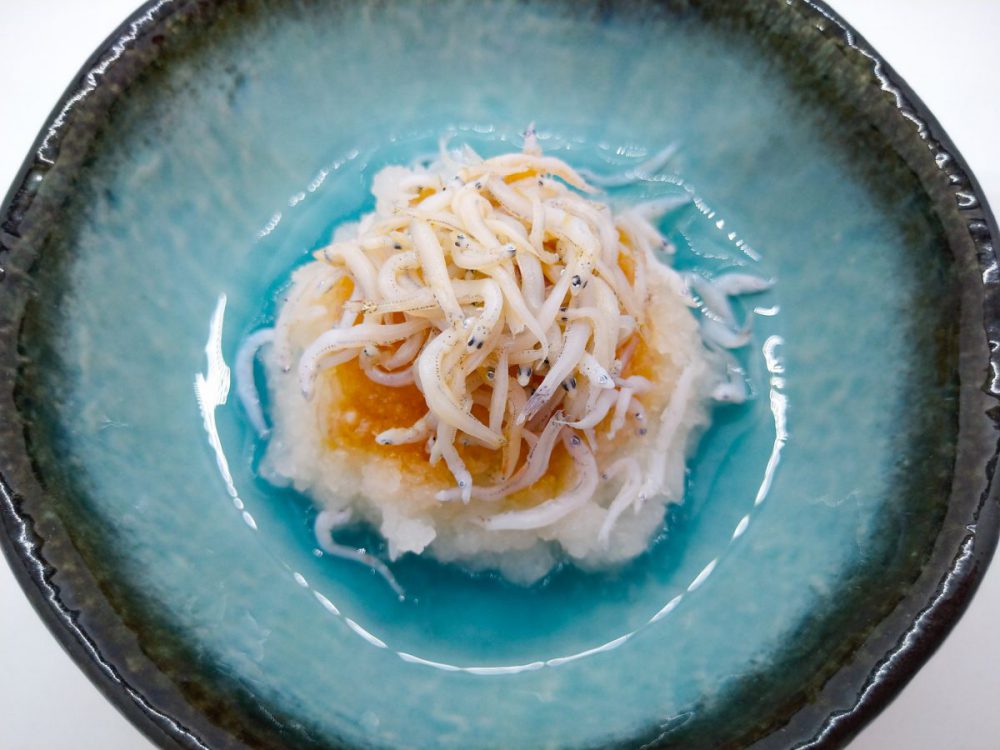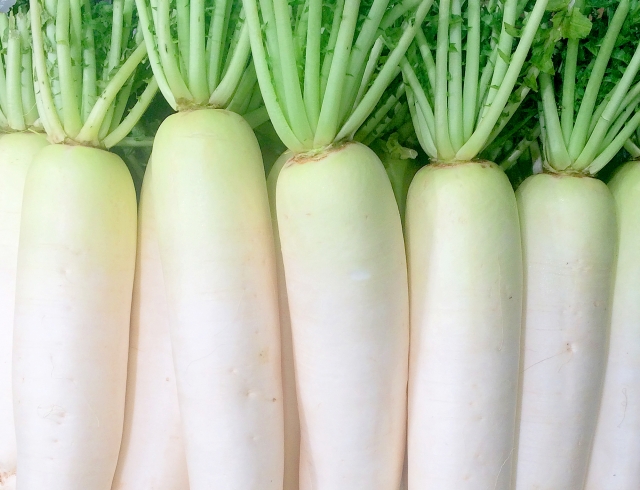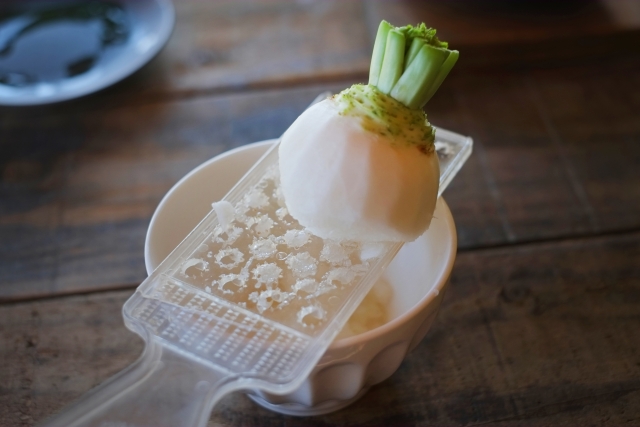Daikon Oroshi: Healthy Grated Radish

Daikon radish is one of the most popular vegetables in Japan. Both the white roots and green tops are eaten raw, pickled, dried, simmered, and even as sprouts. But the most common use for daikon is daikon oroshi: raw daikon grated with a Japanese grater.
If you’ve ever been to a Japanese restaurant, you’ve probably noticed the white, snow-like condiment that accompanies grilled fish or tempura dishes. That’s daikon oroshi.
Daikon oroshi has a fluffy texture and a refreshing, spicy taste that varies depending on how it’s prepared. It’s used as a condiment for a wide range of meat and fish dishes and to add flavour to tempura and soba noodle sauce.

Daikon oroshi doesn’t just taste great, it also has health benefits. Japanese have been using daikon oroshi as an aid to digestion for hundreds of years. The raw radish contains important digestive enzymes like amylase, protease, and lipase that help the body process fats, proteins, and carbohydrates. These enzymes are easier to absorb when the radish is grated.
Daikon oroshi is a condiment, so it’s never eaten on its own. The best way to use it depends on what you’re eating it with.
For dishes like grilled fish, steak, hamburger, or sashimi, add a dab of daikon oroshi to each bite of meat. You can also add soy sauce for extra flavour.

If you’re making tempura, blend the daikon oroshi into the tempura dipping sauce. The spicy daikon complements the sauce and lightens the oily flavour of the tempura.
To use daikon oroshi with stews or hot pot dishes, add it directly to the dish after serving. The grated daikon used with these dishes is known as mizore (sleet) due to its white, slushy appearance. That’s why stews and hotpots with daikon oroshi are called mizore ni and mizore nabe. Add a traditional touch to your Japanese food with home-made daikon oroshi!

For the most authentic daikon oroshi, you’ll need a metal or bamboo radish grater. Either will work well, although they will create slightly different textures. A metal grater is much easier to clean! If you’d rather use utensils you have in the cupboard, a cheese grater will also work.
METHOD:
1. Divide the radish horizontally into three equal parts and choose the part you want to use. The upper part (the leafy end) has a hard texture, fairly sweet flavour, and contains lots of water. Many people prefer this part for daikon oroshi. The middle part has a softer texture and a balance of sweet and spicy flavours. You could use it for daikon oroshi but it’s generally saved for boiled dishes. The lower part (the root end) is a good choice if you like your daikon oroshi really spicy.
2. Peel about 5mm from the radish using a knife.
3. Cut the peeled radish lengthwise into quarters.
4. Prepare a small mesh colander which fits inside a bowl.
5. Choose the grater you want to use. A fine grater will create a fluffy texture with a light flavour. A rough grater will produce a crispier texture that’s suitable for use with grilled fish or in a salad.
6. Grate the radish into the colander. For a fairly mild taste, hold the radish flat and grate gently with a circular motion. For a spicier flavour, hold the radish at a 90-degree angle and apply greater force when grating.
7. Press the grated radish into the colander with the back of your hand to squeeze out some of the water. Be careful not to apply too much pressure. When you take a pinch of the grated radish in your fingers, you should still be able to see droplets of water.
Daikon oroshi shouldn’t be prepared until you’re almost ready to use it. Once grated, the radish will start to lose its flavour and aroma if it’s not used quickly.
